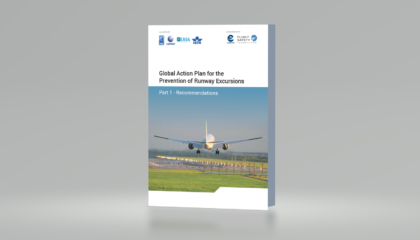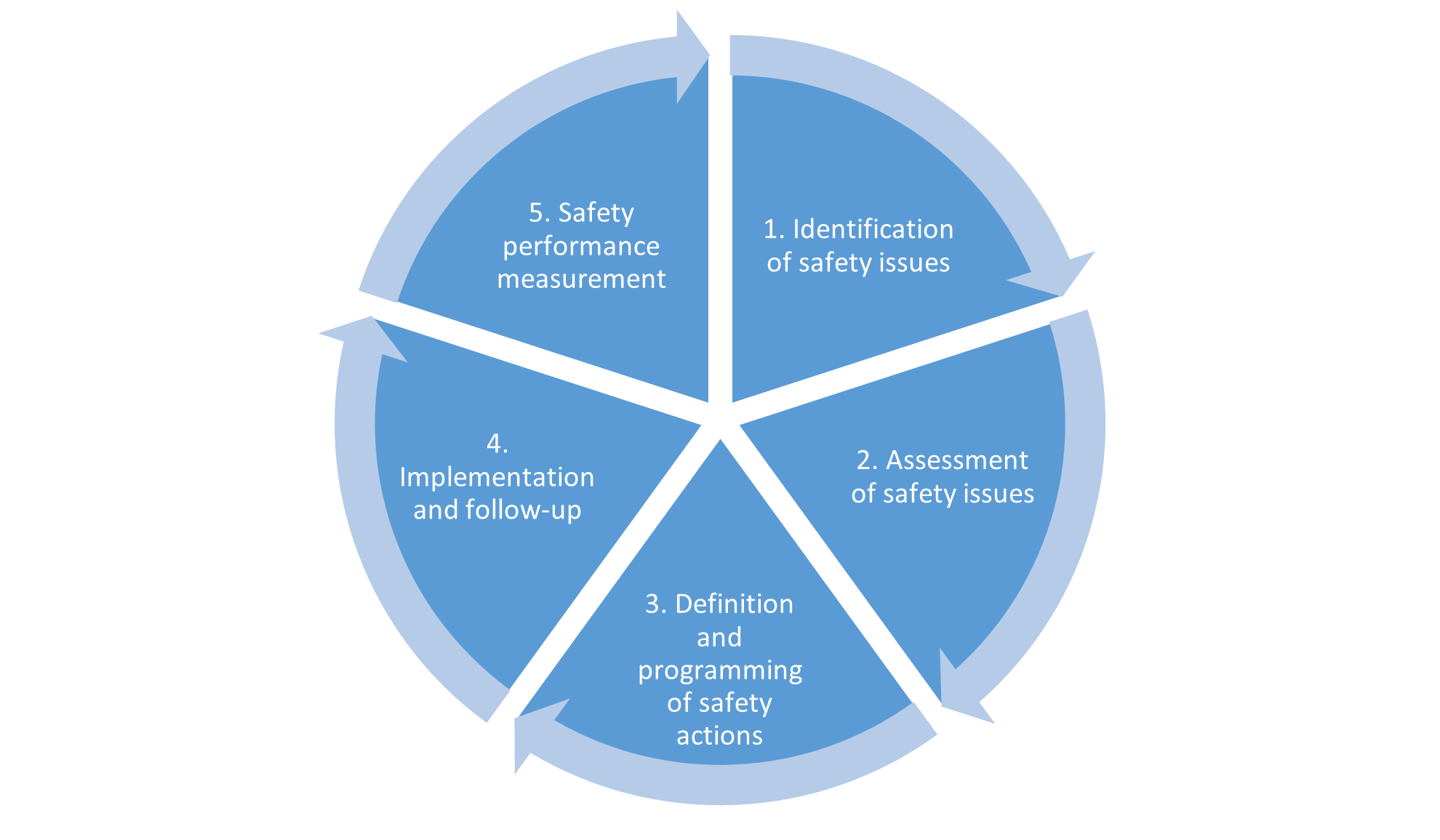
The EPAS is developed through the European safety risk management (SRM) process, which is defined in 5 clear and specific steps as shown on the left.
Regulation (EU) 376/2014 on the reporting, analysis and follow up of occurrences in civil aviation will be well known to anyone involved in Business aviation. It’s been in force since 2015 and it is going through a consultation process for update based on the experience so far
This makes it an ideal time to provide more information about the regulation and also to discuss how the reports submitted are used to drive the European Plan for Aviation Safety (EPAS) and within it the strategic actions that are taken to improve safety.
It is first worth saying that while data is at the heart of the EPAS process, the collaboration with industry and the National Aviation Authorities is vital to the way the safety priorities are identified and the way the EPAS actions are developed. EBAA is involved both in the formal Advisory Bodies to EASA, as a member of the Commercial Aeroplanes Safety Committee (or CAS.COM). Operators who are EBAA members are also involved in our Collaborative Analysis Groups (CAGs).
The collaborative role that EBAA and some of its members have been vital to the decision making process. The EBAA Safety Summit provides a great opportunity to collaborate with the whole community to discuss safety challenges and how the analysis of occurrences is an important driver for future safety mitigations and initiatives at a strategic level. EASA also holds an Occurrence Reporting Workshop as part of the annual SAFE360 Conference. This year the event will on 8-10 June and more information can be found on the event website
It is appreciated that there is a range of practical challenges that Business aviation operators face in interpreting the Regulation and understanding what is expected in terms of occurrence reporting. These include reporting timelines, knowing what types of events should be reported and the need for parallel reporting of the same event by different stakeholders were consistent themes during the presentations and discussion that followed.
The Guidance Material on the European Occurrence Reporting Portal answers some of the common questions and even some less common ones. Through EASA’s Together4Safety programme of Safety Promotion, the Agency is also developing more promotional material and information to help in understanding the reporting requirements as well as other aspects of implementing Safety Management Systems (SMS). You can access the latest Safety Promotion material on the EASA GA Ops Community where there will be a specific area just for the Business aviation community.
Some may have heard of a system called ECCAIRS (European Co-ordination Centre for Accident and Incident Reporting Systems), this is the IT tool that National Aviation Authorities (NAAs) use to process and manage the occurrences that are reported. It is this ECCAIRS format that is created when a report is submitted through the Occurrence Reporting Web Portal. The portal has recently been updated as part of the ECCAIRS 2.0 project so the reporting process is much improved since the original portal was launched.
We often receive questions about the need for different organisations to report the same occurrences. For the analysis of occurrences, it is important to be able to put together the viewpoints of different stakeholders for the same occurrence. The different reports are critical for effective analysis of key risks and to help identify the best mitigations. While there might be a general perception that reports disappear into a “black hole”, they are analysed both at the national level by the NAA and also collated at the European Level into the European Central Repository (ECR), which is a vital source of information for the Safety Risk Management (SRM) process that will be described shortly.
As well as the follow-up work that NAAs carry out on the individual occurrences that are reported, every single occurrence is a vital source of information that is collated and used to help make decisions about the strategic safety activities at the European Level. The more detailed the information you provide on your occurrences the more we learn about the work that needs to be done to improve safety.

The EPAS is developed through the European safety risk management (SRM) process, which is defined in 5 clear and specific steps as shown on the left.
Identification of Safety Issues: The identification of safety issues is the first step in the SRM process and it is performed through analysis of your occurrence data and supporting information. This is mostly performed within several Domain Collaborative Analysis Groups (CAGs). EBAA and some of its members are involved in these activities and EASA provides an update on this work every year at the EBAA Safety Summit. These candidate safety issues are formally captured and analysed to decide if the detailed analysis is needed or if actions are already in place to mitigate the safety issues. The output of this step in the process is the domain safety risk portfolios. Within the portfolios, both the key risk areas and safety issues are prioritised.
Assessment of Safety Issues: Once a safety issue has been identified and captured within the safety risk portfolio, it is subject to a formal assessment. These assessments are prioritised within the portfolio. The assessment process is led by EASA and is supported by the CAGs. In addition, group members are encouraged to participate in the assessment itself; this external support is vital to achieving the best possible results. The result of the assessment is the production of scenario-based bow tie models that help to identify weak controls for which potential actions can be identified. Together this forms the Safety Issue Assessment (SIA), which provides potential actions for the EPAS. This is followed by the Best Intervention Strategy (BIS), which assesses the wider implications and benefits of the proposed actions and makes recommendations on the actions to be included within the EPAS. Before entering the EPAS, the Advisory Bodies review the proposed actions in the BIS.
Definition and Programming of Safety Actions: Once the actions proposed in the BIS have been agreed upon and consulted these then go into the next version of the EPAS. Every year the EPAS as a whole is also consulted with the Advisory Bodies and as previously mentioned, the EBAA plays a significant role here for the Business Aviation community. As a final step, the EPAS is approved by the EASA Management Board at the end of each with the EPAS covering the following 4 years on a rolling basis.
Implementation and Follow Up: The next step in the SRM process involves the implementation and follow-up of the actions that have been included within the EPAS. There are various types of activities within the EPAS. These include focussed oversight, research, rulemaking and safety promotion. These actions directly come from the analysis of the reports that you make. The biggest question is whether you provided enough information in your report to help future decision making. If you never tell us the problem in the report, we can’t guess the solutions that might be needed at the strategic level.
Safety Performance Measurement: The final stage in the process is then the measurement of safety performance. This serves two purposes, firstly to monitor the changes that have resulted from the implementation of safety actions. Secondly, it also serves to monitor the aviation system so that new safety issues can be identified. From this step, the SRM process begins again.
More information on the EPAS can be found here. The new version covering 2021-2025 has been published in January 2021.
This was an external contribution by John Franklin, Head of Safety Promotion at EASA. Should you have any questions, please do not hesitate to reach out to our safety team at safety@ebaa.org.